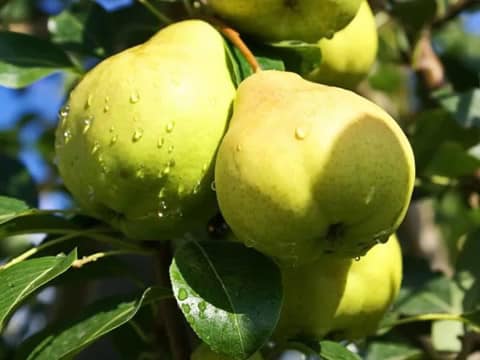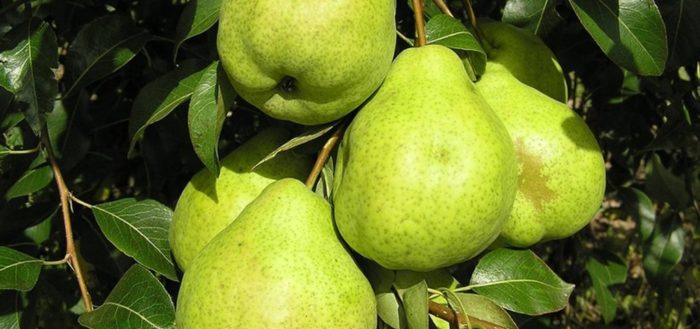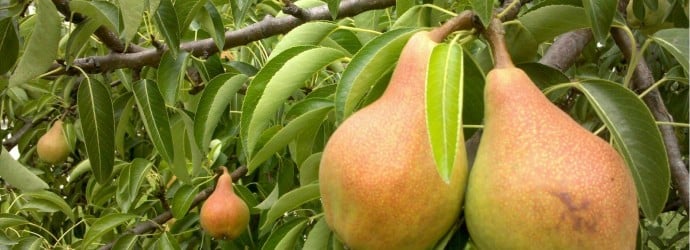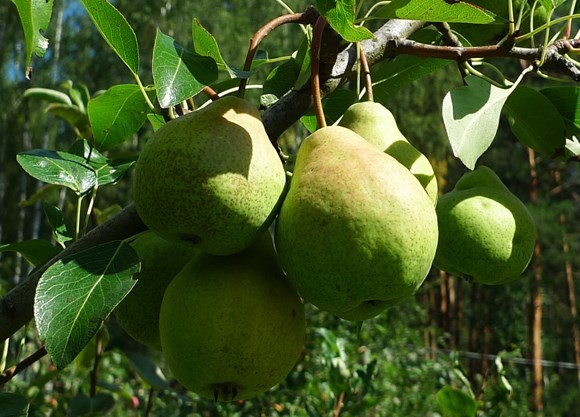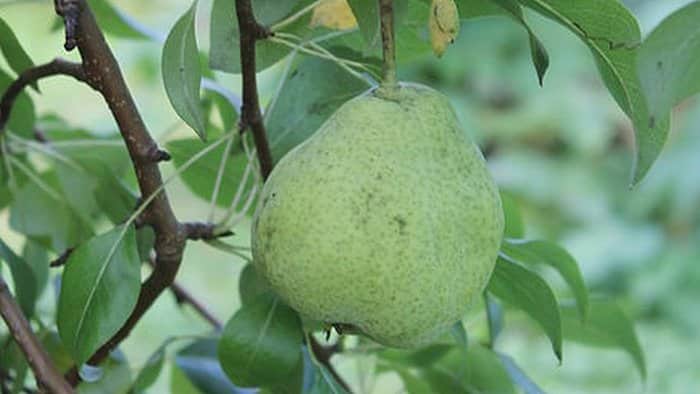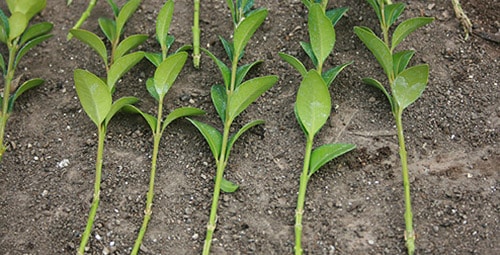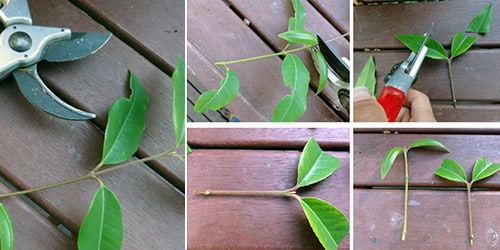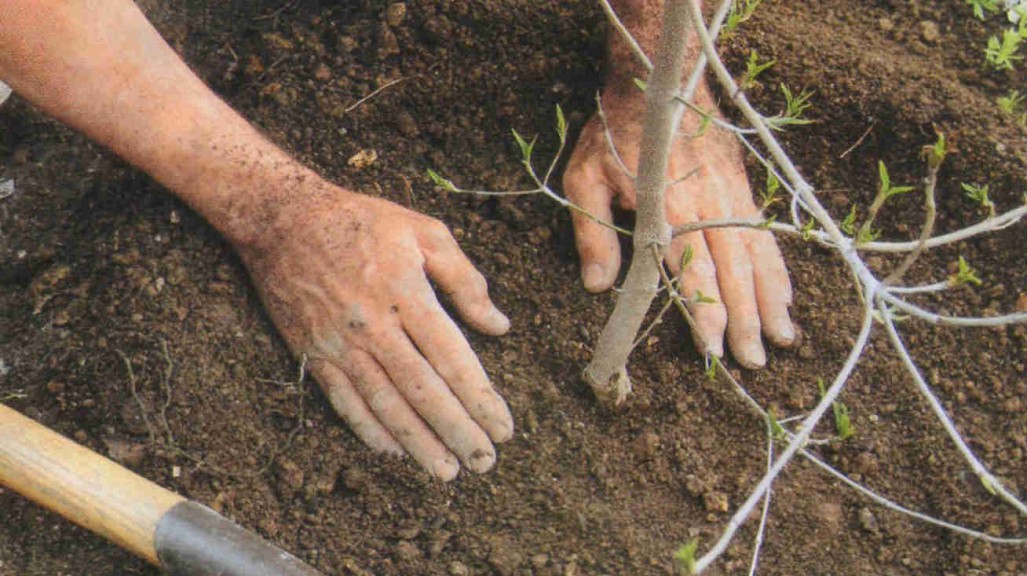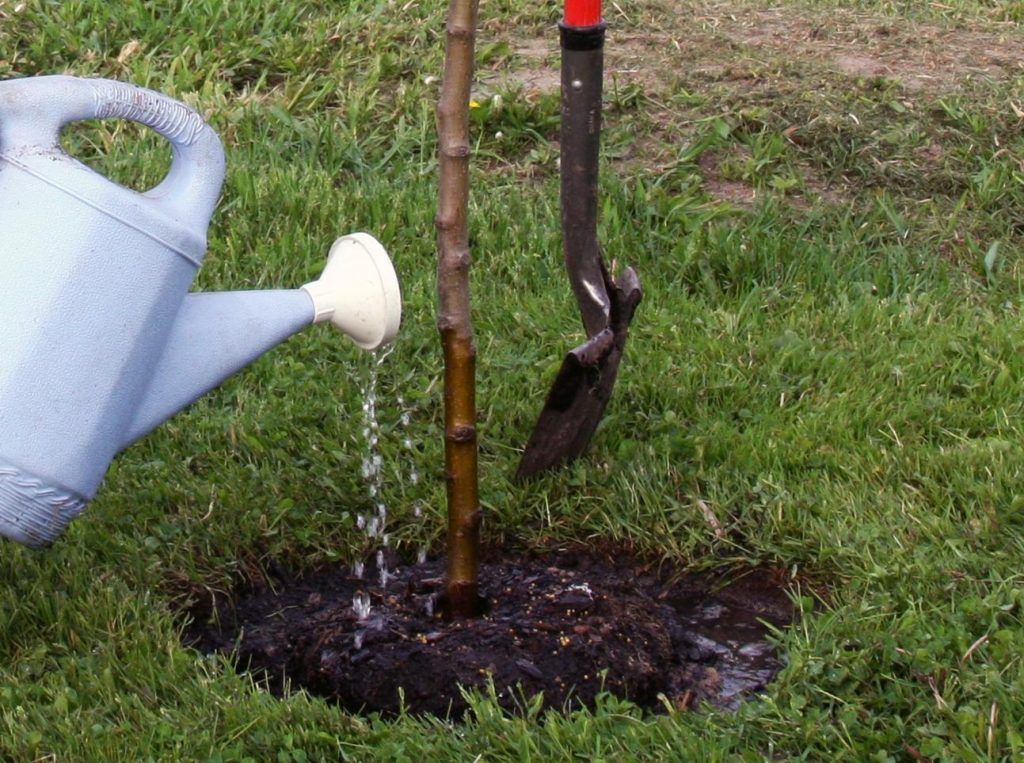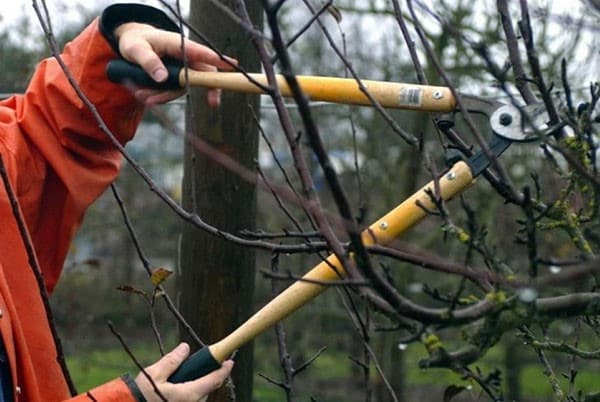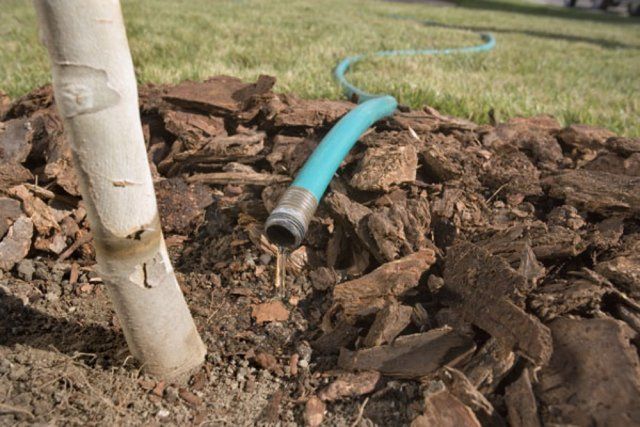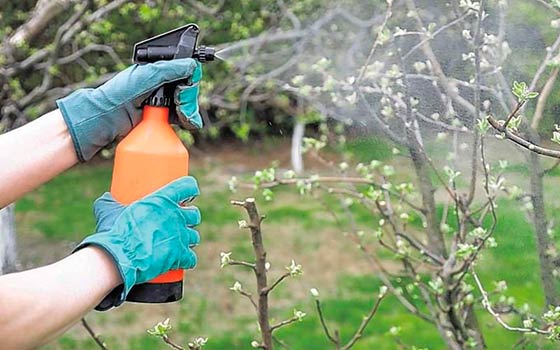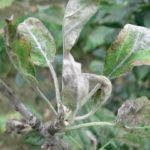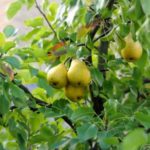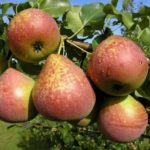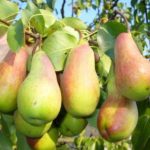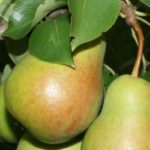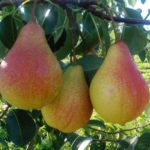Choosing a variety is a responsible matter. The summer resident studies the information and makes a choice. By purchasing August Dew pears, the gardener receives a responsive plant that, with proper care, produces an excellent harvest.
- Full characteristics and description of the August dew pear
- Features of a fruit tree
- Characteristics of fruits
- Ripening period and storage of pears
- Plant resistance to external factors
- Pollinator varieties
- Pros and cons of the variety
- Reproduction methods
- Cuttings
- By layering
- How to choose the right seedling
- How to plant a pear
- Preparing for landing
- Planting seedlings
- August dew pear care
- Watering
- Top dressing
- Trimming
- Sapling
- Mature plant
- Preparing for winter
- Pest and disease control
- Collection, storage and use of crops
Full characteristics and description of the August dew pear
To make a final decision, the gardener must study all available information about the variety.
Features of a fruit tree
A distinctive feature from other cultivated trees is in appearance. The crown is not dense, so that branches are visible through the foliage. During flowering, the garden is decorated with a whole blooming cloud. The branches grow drooping and not very dense. With proper formation, the summer resident will receive an exquisite garden decoration.
One inflorescence contains 5-7 flowers. With favorable developments, almost every ovary forms a fruit. This is what determines the volume of the harvest. The height of an adult plant reaches 2.5-3 m.
Characteristics of fruits
No less than the appearance and characteristics of the tree, the summer resident is interested in the description of the fruit. Studying this information helps you make your choice. August dew pears are small, their weight reaches 120-150 g. With proper care and all necessary techniques, the weight of the fruit increases to 200 g.
If the harvest is average, the fruits are almost the same size. But with a bountiful harvest, the tree bears fruits of different sizes.
The color of the pear is greenish. After harvesting, the fruits become yellowish and have small dots on the skin. Pears have a sweet and sour taste. Tasting score 4.5 points.
Ripening period and storage of pears
The tree produces its first fruits in the 4th year after planting. Fruits regularly and without interruption. No fruit shedding was observed. August dew is a summer variety, so the ripening period occurs in mid-August. Some gardeners wait for the fruits to be ready to eat as soon as the first pear falls.
The shelf life without creating the necessary conditions is short. With proper storage, the fruits last up to 14 days.
Gardeners advise harvesting pears a week before biological ripeness. Cellar ripening significantly improves the taste. If carefully removed from the tree, pears are well transported and retain their presentation for a long time.
Plant resistance to external factors
Manufacturers characterize the variety as resistant to adverse weather conditions. The plant is frost resistant. In case of mechanical damage and severe frost, the branches quickly recover and grow. Diseases characteristic of the crop are dangerous for the August dew pear. The only exception is scab. The plant has a stable immunity to it.
Pollinator varieties
To increase productivity, several different types of fruit trees are grown in the immediate vicinity. For pears, August Dew is recognized as the best pollinating variety in Memory of Yakovlev. Other varieties whose flowering period coincides with the species being planted are also suitable.
Pros and cons of the variety
Each plant has advantages and disadvantages. The summer resident should familiarize himself with them before planting a tree on the site.
Positive traits:
- precociousness;
- stable, high yield, every year;
- versatility of application;
- resistance to scab;
- resistance to unfavorable growing conditions;
- unpretentiousness;
- frost resistance;
- long shelf life if the necessary conditions are created;
- high tasting score.
Negative qualities:
- it is necessary to plant pollinators;
- weak immunity to diseases;
- reduction in commercial qualities with a bountiful harvest.
A summer resident will be able to appreciate the variety only after cultivation.
Reproduction methods
In order to independently grow the August Dew variety on your plot, you need to know how summer residents do it. What is the effectiveness and efficiency of the method.
Cuttings
This method of propagation requires the middle part of the branch; the top does not take root well. The cuttings are cut into pieces, each containing 3-4 leaves. The lowest leaf is torn off, the cut is made at an angle of 45⁰, the upper one is straight.
Harvesting time falls on different periods, the period depends on the climate of the region. Therefore, you should look at the appearance of the branches. The very last leaf has not yet blossomed, it’s time to cut the cuttings.
The finished pieces of twigs are placed in a solution that stimulates root growth. Then containers for rooting are prepared. Fertile soil is poured onto the bottom of a container 20-25 cm high, consisting of:
- 3 parts of turf land;
- 1 part compost;
- 1 part peat;
- 1 part sand.
The top is covered with a layer of coarse river sand to a height of 5 cm, the cuttings are buried 2 cm. Then it is necessary to constantly monitor the soil moisture. The leaves will help determine the condition of the cuttings. If they begin to dry out, this planting material is removed from the planting container.
By layering
The root shoots are secured in such a way that part of the branch is in the ground. Waiting for roots to appear. Then they are planted in a permanent place. If there is no growth, choose a 2-year-old branch and bend it to the ground. A container with soil is placed under it and the branch is secured in it. After the formation of an independent root system, they are planted in a permanent place.
How to choose the right seedling
In order to get an excellent harvest in the future, the summer resident should carefully consider the choice of seedling:
- preference is given to a 1-2 year old plant;
- the trunk must be strong and without damage;
- there should be no deformations, cracks or growths on the branches;
- the root system is not damaged, not dry or frostbitten;
- long roots will help the plant to take root and grow faster.
Carefully selected planting material is prepared for planting.
How to plant a pear
After the seedling is purchased, it needs to be planted in the ground. Half the success depends on how correctly this is done.
Preparing for landing
Gardeners recommend shortening the roots of the seedling before planting. The top of the tree is also trimmed. The fewer branches, the easier the plant will take hold and grow.
Immediately before planting, planting material is placed in water or a diluted root growth stimulator.
Planting seedlings
Then they begin to prepare the site. The site is chosen on the sunny side, closed from drafts and winds. The soil is dug up in advance, humus and mineral fertilizers are added. Pears are planted in spring until mid-April or in autumn, at the end of October.
Each summer resident calculates the timing, independently taking into account the climate of the growing region. The planting hole is dug deep, the bottom is filled with a mixture of turf soil, peat, humus, sand, and mineral fertilizers. A mound is formed and a seedling is placed on it.
The roots are straightened, periodically lifting the seedling while covering it with soil. The root collar or grafting site is not covered. Water generously with water and cover the tree trunk circle with a layer of mulch.
August dew pear care
When the plant is established, proper care is taken. Timely implementation of agricultural techniques will help to grow a strong tree.
Watering
The amount of watering of a seedling and an adult plant depends on weather conditions. In dry weather, water the trees at least 5 times a month.
Top dressing
The first time after planting, the trees do not need fertilizers. Pear responds well to organic matter. Manure is applied in the spring, 1-2 kg per tree. The root system of pears should not be allowed to come into contact with potassium and nitrogen. They have a detrimental effect on plant roots. As a result, the tree dies. Complex mineral fertilizers containing them are used with caution.
Trimming
August dew requires mandatory pruning throughout the entire period of growth and development. The future harvest depends on how correctly this is done.
Sapling
In the first spring, the annual plant is shortened at a distance of 1.5 m from the ground; in the second year, excess side branches are removed.
Mature plant
Pruning an adult plant depends on the wishes of the gardener. The spindle-shaped method is recommended. There is nothing complicated about forming this way. Pears begin to bear fruit earlier. The trunk is cut to approximately 45-50 cm. Then the skeletal branches that grow to the sides are preserved annually, leaving a small distance between the branches.
If the shoots grow densely, the tree will produce less yield and the fruits will be small. Sanitary pruning includes a method of disease control. If there is a developing disease, it is eliminated by timely removal of the affected parts of the tree.
Preparing for winter
In autumn, plants are watered, fertilized and pruned. In this way, the crop is prepared for winter, allowing the pear to be saturated in advance.
August dew is considered a variety resistant to low temperatures. It is recommended to additionally cover trees. Use dry plant residues or special material. Some summer residents additionally cover trees with snow if there is not enough snow.
Pest and disease control
The pear is resistant to scab. To combat other diseases characteristic of the culture, it is recommended to carry out preventive measures. These include timely implementation of agricultural techniques, compliance with the subtleties and recommendations of planting.
In addition, in spring and autumn, trees are preventively treated against viruses and bacteria. Use drugs purchased in specialized stores.
During fruiting, you cannot use chemicals. They are deposited in fruits, causing harm to the body. During this period, folk remedies are used. Traps are installed against insects. Or treated with folk remedies.
Collection, storage and use of crops
The fruits are collected in dry weather. If a summer resident wants to leave pears for long-term storage, they should be collected carefully. It is necessary to remove from the tree a little earlier than the fruits are completely ripe. Approximate time: 1st-2nd decade of September. The harvest time depends on the climate of the growing region. In a cool room, pears are placed in wooden boxes and sprinkled with sawdust or lined with paper. This will protect neighboring fruits from rotting upon contact with spoiled fruit.
The scope is wide; housewives use the fruits for:
- all types of canning;
- cooking preserves and jams;
- preparation of juices and drinks;
- drying;
- freezing;
- fresh consumption.
High taste characteristics, density and aroma allow Augustow dew pears to be used for all types of processing. Planting a pear is a crucial moment. If the summer resident tries to put all his effort into it, the plant will reward it with a high yield.

